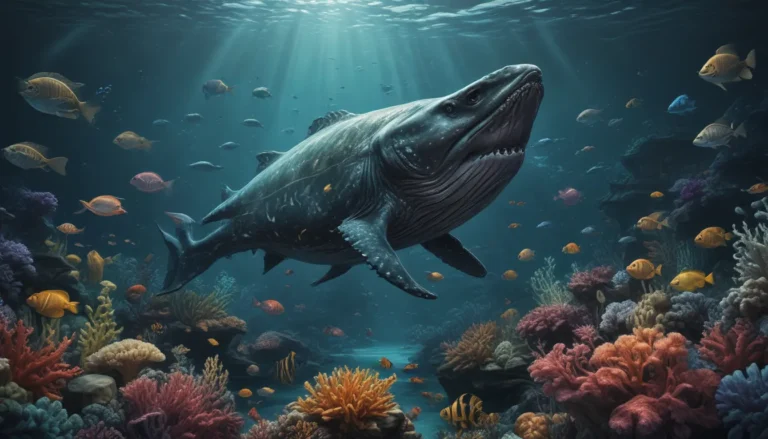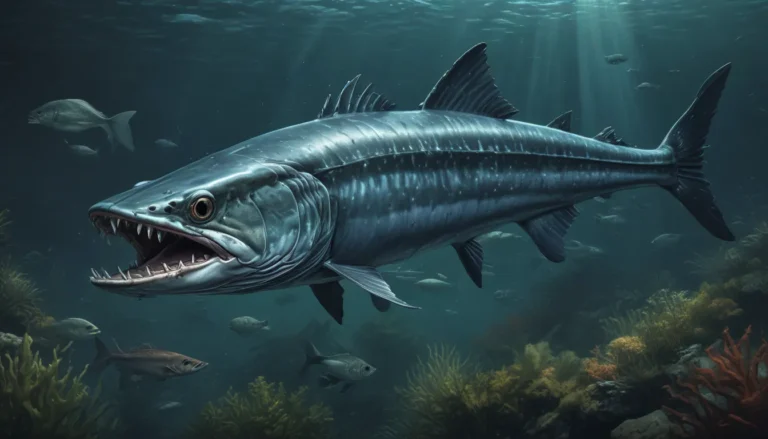The pictures we use in our articles might not show exactly what the words say. We choose these pictures to make you interested in reading more. The pictures work together with the words but don’t take their place. The words still tell you the important facts.
Welcome to the mesmerizing realm of beluga whales, the captivating creatures of the sea renowned for their striking appearance and sociable nature. Belugas, also known as white whales, inhabit the Arctic and sub-Arctic regions, serving as Arctic ambassadors and captivating the hearts of people worldwide. Join us as we delve into the intriguing world of beluga whales, uncovering their unique characteristics, social behaviors, remarkable adaptations, and vital role in the marine ecosystem. Let's embark on an enlightening journey to explore the fascinating facts about beluga whales.
The Charming Arctic Ambassadors
Beluga whales, affectionately known as “sea canaries,” are highly vocal marine mammals predominantly found in the Arctic and sub-Arctic regions. These majestic creatures play a pivotal role as ambassadors for the remote and icy ecosystems, enthralling and inspiring the imagination of individuals across the globe.
Unveiling Their Distinctive Appearance
Beluga whales are easily distinguishable by their pristine white skin, earning them the moniker “sea canaries.” What sets them apart is their lack of a dorsal fin, allowing them to navigate effortlessly under ice and surfaces. The absence of pigmentation in their skin aids in blending seamlessly into their icy surroundings, showcasing their exceptional adaptation skills.
The Melon Mystery Unraveled
Belugas boast a unique feature known as the “melon” situated on their foreheads. This fatty bump functions as an acoustic lens, enabling them to focus and direct their vocalizations with precision. The melon plays a pivotal role in their communication repertoire, as belugas are renowned for their diverse sounds, including clicks, whistles, and chirps.
Embracing Sociable Bonds
Belugas are incredibly sociable creatures that reside in close-knit groups called pods. These pods can vary from a few individuals to large groups numbering in the hundreds. Their strong social connections are reinforced through vocalizations and physical interactions, as they journey, hunt, and migrate together.
Embarking on Seasonal Adventures
Beluga whales are revered for their extensive seasonal migrations. During the summer months, they embark on journeys to warmer waters in search of sustenance and suitable breeding grounds. These migrations can span thousands of kilometers, underscoring their remarkable navigational prowess.
A Glimpse into the White Beluga’s World
The white beluga (Delphinapterus leucas) stands out as the most popular and widespread species of beluga whale. Inhabiting the Arctic and sub-Arctic waters of the Northern Hemisphere, these striking creatures' white coloration aids in blending harmoniously into their icy surroundings, offering camouflage from potential predators.
Unveiling the Enigmatic Gray Belugas
Gray belugas (Delphinapterus leucas) present a rare color variation among beluga whales. Departing from the traditional white hue, these individuals exhibit a grayish or mottled appearance. Not albinos, gray belugas showcase distinct pigmentation patterns, occasionally spotted among populations of white belugas.
The Precarious Existence of the Cook Inlet Beluga
The Cook Inlet beluga (Delphinapterus leucas) represents a unique beluga population inhabiting the Cook Inlet of Alaska, USA. Critically endangered, with only a few hundred remaining, their survival is imperiled by habitat degradation, pollution, and dwindling salmon populations.
Discovering the St. Lawrence Beluga Community
St. Lawrence belugas (Delphinapterus leucas) constitute a beluga whale population residing in the St. Lawrence Estuary in Canada. Renowned for their proximity to urban areas, these belugas serve as a distinctive and accessible species for scientific research and public observation.
Echolocation Wonders of Beluga Whales
Belugas possess extraordinary echolocation abilities, utilizing sound waves to navigate their surroundings, locate prey, and communicate with one another. Emitting clicks that bounce off objects and return to their melon, belugas craft detailed auditory maps of their environment with finesse.
Plummeting the Depths: The Deep Diving Belugas
Despite not being renowned for deep diving compared to other whale species, belugas can reach impressive depths of up to 1,000 meters (3,280 feet). Their diving prowess facilitates access to deeper water habitats in their quest for sustenance.
Witnessing Aquatic Acrobatics
Beluga whales are celebrated for their playful and acrobatic antics. Engaging in behaviors like breaching, synchronized swimming, and headstands, these marine marvels showcase their playful side. These displays are believed to serve social and communicative purposes within their pod.
Unraveling the Mystery of Their Flexible Neck
Diverging from most cetaceans, belugas boast the remarkable ability to move their heads and necks in an upward and downward fashion. This flexibility grants them the power to direct their sonar effectively and navigate icy waters with finesse.
Thriving in Icy Environments: Cold-Weather Adaptations
Belugas exhibit several adaptations enabling them to thrive in their icy habitat. Their thick layer of blubber provides insulation and buoyancy, while specialized proteins and blood vessels in their skin prevent freezing, ensuring their survival in sub-zero temperatures.
Embracing the Technique of Bubble-Net Feeding
Beluga whales demonstrate impressive hunting skills through a unique feeding strategy called bubble-net feeding. Collaboratively, a group of belugas releases a ring of bubbles around a school of fish, creating a concentrated area that facilitates capturing prey with relative ease.
The Ecosystem Engineers: Belugas at Work
Beluga whales serve as pivotal ecosystem engineers in the Arctic, actively preserving balance in the food web by regulating the populations of their prey species. Their feeding activities create openings in sea ice, facilitating other marine mammals' access to breathing holes.
Guardians of Ecosystem Health
As apex predators, belugas serve as crucial indicators of ecosystem health. Monitoring their population trends, health, and behaviors offers valuable insights into the overall well-being of the Arctic marine environment, shedding light on the impacts of climate change, pollution, and human activities.
Navigating the Threats Faced by Belugas
Beluga whales confront a myriad of threats impacting their populations. From habitat degradation and pollution to climate change, noise pollution from human activities, and interactions with fishing gear, these factors, compounded by their low reproductive rate, render belugas susceptible to population declines.
Advocating for Conservation Initiatives
Numerous organizations and governments are actively engaged in safeguarding and conserving beluga whales. Conservation endeavors span habitat preservation, pollution mitigation, research and monitoring initiatives, educational outreach programs, and the implementation of regulations to mitigate human impacts on beluga populations.
Preserving Sanctuaries and Protected Areas
Establishing protected areas and marine reserves is imperative for beluga whale conservation. These designated zones offer secure havens where belugas can feed, breed, and flourish, shielded from disturbances arising from human activities.
Embracing the Spirit of Research and Monitoring
Scientists conduct extensive research and monitoring projects to deepen our understanding of beluga populations, behaviors, and ecological roles. This knowledge serves as a foundation for crafting conservation strategies and management decisions, safeguarding the future of beluga whales.
Embracing the Whimsical World of Beluga Whales
Beluga whales, with their enchanting appearance, extraordinary adaptations, and affable nature, continue to captivate audiences globally. From their iconic white coloration to their complex vocalizations, belugas epitomize the marvels of marine life. As we unite in ensuring the protection and conservation of these majestic beings, let us raise awareness about their pivotal role in the marine ecosystem and advocate for their continued existence.
Frequently Asked Questions
What constitutes the diet of beluga whales?
Beluga whales predominantly feed on a diverse array of fish species, including salmon, herring, cod, and capelin. Their opportunistic nature allows them to adapt their diet based on prey availability in their habitat.
What is the lifespan of beluga whales?
Beluga whales boast a relatively long lifespan, with individuals surviving up to 50 years or more in the wild. Some belugas in captivity have surpassed the age of 60, highlighting their longevity.
Can beluga whales communicate with other whale species?
Although beluga whales primarily communicate with their counterparts, they have been observed engaging with other cetacean species such as killer whales and narwhals. These interactions may involve vocalizations, physical contact, and social interactions.
Do beluga whales undertake migration?
Beluga whales exhibit highly migratory behaviors, with populations embarking on seasonal migrations in pursuit of food and suitable breeding grounds. Some populations traverse vast distances, while others confine their movements to localized regions within their range.
Are beluga whales kept in captivity?
Yes, beluga whales are occasionally housed in captivity in zoos and aquariums. However, ongoing debates persist regarding the ethical implications of confining these intelligent and wide-ranging animals in restricted environments. Efforts are underway to enhance the welfare of captive belugas and, in certain instances, relocate them to sanctuaries.
As we celebrate the enigmatic world of beluga whales, let us remain committed to their conservation and well-being, ensuring that these captivating creatures continue to grace our oceans for generations to come.






